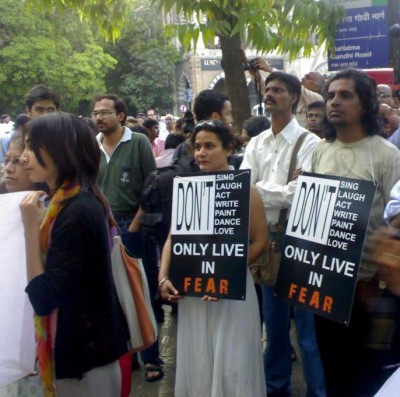This is the 12th installment of my weekly column for Mint, Thinking it Through.
This is the transcript of a speech given by the demon Beelzebub at the 90th Annual Convention of Demonic Beings.
Comrades and Monsters,
Welcome. I can barely express my joy at the unspeakable horror of being present among such hideous monsters as yourselves – demonic beings dedicated to the ruin and damnation of humanity. In various ways, under the cunning guise of doing good, we have brought sadness and misery upon humanity. We have perpetuated poverty, hatred and ill-health. I wish today, for the sake of the young apprentice beasts present here, to speak about our primary tool of achieving all this: Compassion.
Humans, you see, are fooled by appearances. Come to them as a wrinkled monster with horns, and they recoil. Pretend to be a loving grandpa, and their defences are down. We senior demons realised long ago that to hurt the humans, we have to pretend to care for them. Even as we have nothing but their marination in mind, we must appear compassionate. Stating the most noble intent, we must unleash the very worst of policies. Even better, we must fool some humans, who themselves wish to appear compassionate, into pushing these very policies.
And how we have succeeded! Everywhere there are politicians sincerely pushing well-intentioned policies that are disastrous for the people they are supposed to help. Of course, some people see through our evil designs and protest, but they are dismissed as cruel and uncaring, for they are questioning compassion itself. The irony!
A good example of this comes from Kolkata, a city you must be familiar with. The government there is outlawing all rickshaws pulled by men, because they feel it is “inhuman for a human being to carry another in this day and age,” as their mayor recently said. How caring this seems! And yet, this policy will put 18,000 rickshaw pullers out of a job that they preferred to all other options available to them. Now, that is inhuman. Joy!
Hell be praised, the same logic has long been used to protest sweatshops and call centers and dance bars. The people working there are being “robbed of their dignity,” we are told. Those pretending to care about them would love to deny them of the best options available to them, thus pushing them into a worse existence, and they often succeed. When dance bars were outlawed in Maharashtra – another of my favourite weapons, morality, played a leading role in that decision – many dancers went into prostitution.
Ah, Maharashtra! Mumbai is particularly dear to me as a demonstration of what compassion can achieve: Just see the misery rent control has inflicted there. It was supposed to protect tenants from evil landlords, but by restricting the supply of housing, has driven up rents, made affordable housing scarce, and made slums inevitable. Even more, it has disincentivised landlords from looking after rent-controlled houses, some of which are close to falling apart. Gravity is an invention of hell, I am proud to remind you!
India has many such price controls, which inevitably distort our enemy, the free market. These apply not just to goods but also to labour – how noble these legislators feel when they bring about a minimum wage, or support labour laws that dry up the supply of jobs and hurt the ones they’re supposed to help: the workers.
India’s redistributive schemes are also a devilish masterstroke, based on the principle, “Steal from the Rich and Pretend to Give to the Poor.” Actually our unknowing stooges, India’s well-meaning and compassionate politicians and bureaucrats, steal from everybody, and the money they steal has a cost: It acts as a disincentive to those it is stolen from, and would often have helped the poor more if simply left with the taxpayer.
The social policies we promote are as much of a slow poison as our economics. Why redistribute only wealth when one can redistribute opportunities as well? Consider reservations in India: Under the guise of being compassionate towards castes that have been discriminated against, reservations perpetuate thinking along caste lines, and increase awareness of and animus towards other castes. Some individuals benefit at the cost of other individuals, and they cancel each other out. But the hatred that is spread at the injustice, ah, priceless! (They even call it social justice! How noble they feel!)
There is lots more to say, and I could speak of India for eons, so much harm has been caused there under the guise of compassion. But I shall end here, for I know that you are looking forward to your repast. Let us move onwards to the dining room, my friends, where India’s poor have been laid out on the dining table. Let us feast!
